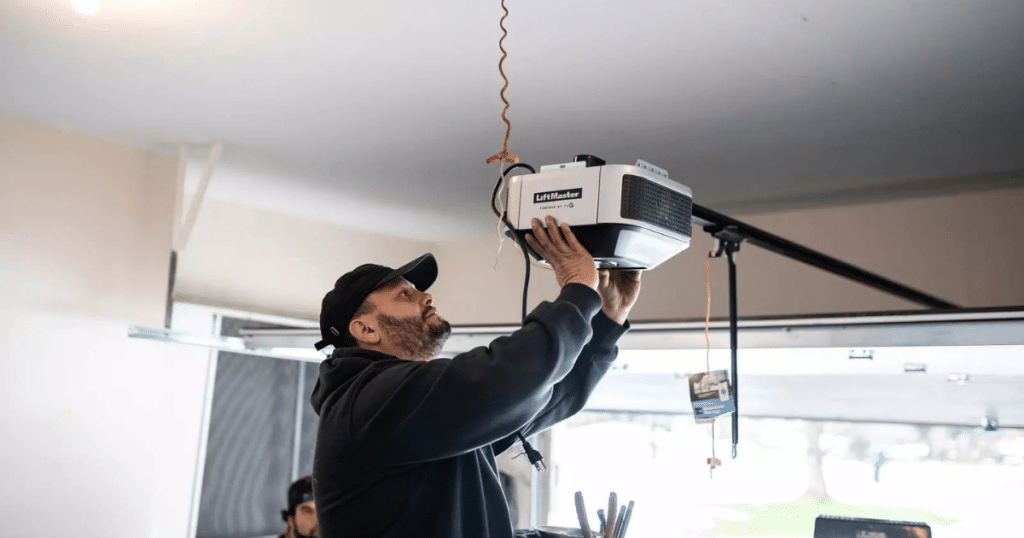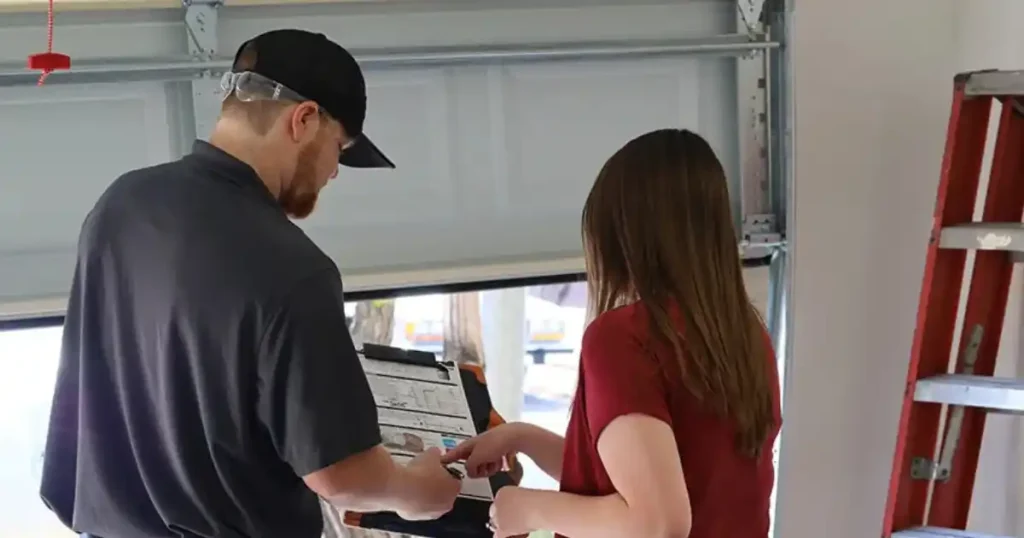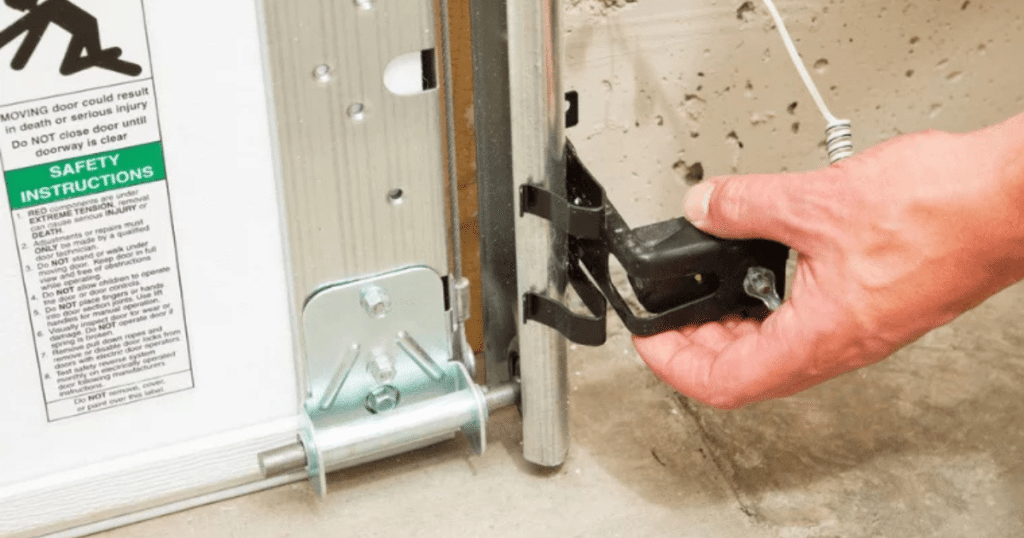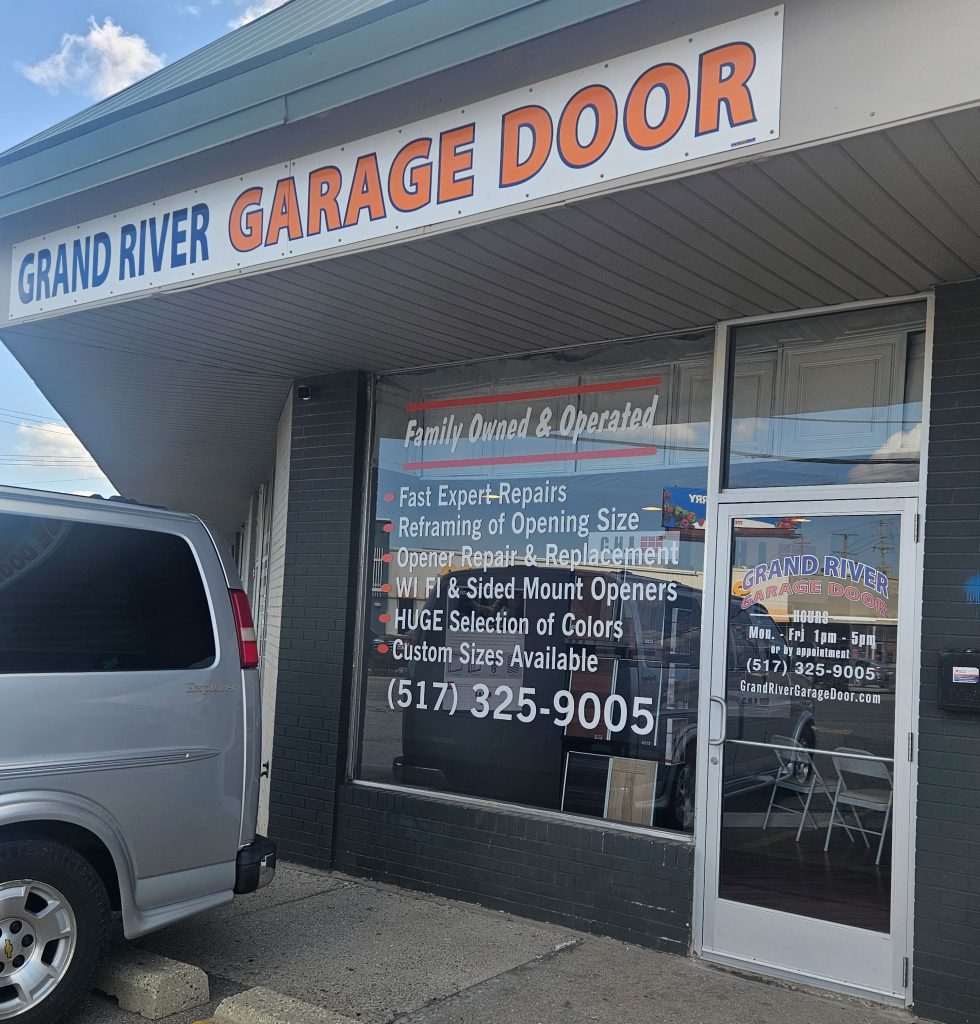If your garage door motor has slowed down, stopped responding, or started making strange noises, you’re not alone. Many homeowners search online for solutions using phrases like “how to change garage door motor”, hoping for a quick fix. But replacing a garage door motor isn’t just a plug-and-play task; it involves electrical work, alignment calibration, and safety precautions that require technical knowledge and experience.
In this post, we’re not walking you through a DIY repair. Instead, we’re helping you understand what motor replacement involves, why it’s essential to hire a qualified professional, and how this service improves the long-term performance and safety of your garage door system.

Whether your motor has burned out or you’re upgrading to a quieter, more innovative model, this guide covers everything you need to know, minus the guesswork or risk. Let’s break it down step by step so you can make an informed decision for your home and garage.
What Is a Garage Door Motor and What Does It Do?
A garage door motor powers the automatic opening and closing mechanism of your garage door. It’s part of a larger opener system that includes the drive unit, remote controls, wall-mounted switches, safety sensors, and often a backup battery or Wi-Fi controller.
The motor works by turning a gear that moves the chain, belt, or screw drive, pulling the door up or lowering it down in a controlled, safe manner. It must be strong enough to lift the door’s full weight, often 150 to 400 pounds, and precise enough to stop when it reaches the open or closed position.
When the motor fails, the entire opener system becomes unreliable or completely useless. That’s why understanding its function helps you spot early warning signs before a full breakdown occurs.
For a deeper look at opener systems as a whole, visit Garage Door Opener Installation.
Signs Your Garage Door Motor Needs to Be Replaced
It’s not always obvious when the motor is the problem. That’s because many garage door issues—like uneven motion or strange sounds—can also be caused by tracks, springs, or sensors. Here are the most common signs that point specifically to motor failure:
- The door moves slowly or stops mid-cycle.
- The remote or wall switch doesn’t respond consistently.
- You hear grinding or buzzing from the motor unit.
- The motor unit emits a burning smell.
- The door reverses suddenly or jerks during operation.
If your garage door exhibits these symptoms, it’s time to have a technician inspect the motor, opener, and surrounding components.
For more troubleshooting clues, see Garage Door Repair Services, which covers related mechanical issues and how to address them.
Why Replacing a Garage Door Motor Isn’t a DIY Project
High Tension and Heavy Parts
Garage door motors are attached to high-tension spring systems and lift doors weighing hundreds of pounds. Handling these without training can result in serious injury or property damage. A spring under tension can snap with enough force to break bones or damage vehicles. Even something as simple as misaligning the track or belt can prevent the door from opening properly or cause it to fall.
Electrical Work and System Calibration
Garage door motor replacement isn’t just physical. It involves:
- Disconnecting and rewiring power safely
- Mounting the new opener to code
- Aligning and tensioning the drive system
- Reprogramming remotes and wall switches
- Testing auto-reverse and sensor systems
Mistakes in any of these areas can cause the opener to fail or violate local building codes.
Warranty and Compliance Risks
Most garage door opener manufacturers require licensed technicians for installation to keep the product under warranty. DIY installation could void coverage and lead to expensive replacements down the line.
Need help deciding what kind of opener suits your system? Learn more on the Garage Door Opener Types page, or explore our full range of Garage Door Services to ensure your installation is done right the first time.
What to Expect During Professional Garage Door Motor Replacement
A trained technician will walk you through the process from diagnosis to final testing. Here’s how the service typically unfolds:
1. Inspection and Assessment
The technician will confirm that the issue is motor-related, not caused by worn-out rollers, a broken spring, or sensor failure. This step saves time and avoids unnecessary replacements.
2. Safe Removal of the Existing Unit
After disconnecting power and disabling the door, the old motor and mount system are carefully removed.
3. Selection of Compatible Motor
Based on your door size, weight, and opener type (belt-drive, chain-drive, screw-drive), a suitable replacement motor is selected.
4. Installation and Calibration
The new unit is mounted, aligned, and connected to the door’s drive system. Safety sensors are recalibrated, and the motor’s open/close limits are adjusted.
5. Remote and Smart Features Setup
If your system includes wireless access or smart features, the technician will program your remotes, keypad, and any mobile app integration.
6. Safety Testing and Quality Check
A full cycle test is done to ensure smooth motion, proper balance, and safe auto-reverse functions.
Should You Replace Just the Motor or the Entire Opener System?

In some cases, replacing the motor alone makes sense. But in others, a full opener replacement is the smarter long-term investment.
Consider replacing the entire opener if:
- Your opener is over 10 years old
- The system is no longer compatible with modern remotes or smart features
- You’ve had multiple breakdowns or service calls
- The opener is loud or lacks safety features
Modern garage door openers are quieter, safer, and more efficient. Many include:
- Battery backups
- Motion-activated lighting
- Wi-Fi connectivity
- Keypad or smartphone access
Explore more about upgrading your system on the Garage Door Opener Installation page.
How Much Does It Cost to Change a Garage Door Motor?
Motor replacement cost depends on several factors:
- Type and power rating of the motor
- Labor and service rates in your area
- Whether the full opener system is being replaced
- Smart features and accessories included
On average, professional motor replacement ranges from $300 to $600 for standard systems. High-end models with smart features or backup batteries may cost more.
Emergency or after-hours service can also raise the total. To get a quote that fits your home and budget, request a personalized consultation on Request Service.
How Long Does a Garage Door Motor Last?
Most modern garage door motors last 10 to 15 years, depending on usage and maintenance. Frequent cycles, exposure to extreme temperatures, or poor installation can reduce lifespan significantly.
To extend the life of your new motor:
- Schedule yearly tune-ups
- Keep the track system clean and lubricated
- Test sensors and remotes regularly
- Avoid overuse or rapid cycling
Conclusion
Garage door motor replacement is not a task to take lightly. It requires electrical knowledge, system alignment, and strict safety practices that go far beyond a weekend DIY job. Whether your current motor is dead, unreliable, or just outdated, choosing a professional replacement ensures a safer, smoother, and longer-lasting solution.
At Grand River Garage Door, we provide expert garage door motor replacement with precision, transparency, and complete system testing. Our technicians handle everything from diagnosing the issue to programming your remotes so you don’t have to risk a thing.
Book your service today and restore your garage door’s power and performance.
Frequently Asked Questions
1. Can I replace just the motor without changing the whole opener?
Yes, you can replace just the motor if the rest of the opener system is still functioning properly. However, a technician will need to inspect the entire setup to ensure compatibility and safety. If other components like the drive system or sensors are outdated, a full replacement might be more cost-effective.
2. Will I need new remotes or a keypad?
Not necessarily. Many newer garage door motors are compatible with your existing remotes and keypads. However, older systems may require reprogramming or upgrades, especially if the frequency or technology differs. Your technician can test compatibility and help you update to a more modern setup if needed.
3. How soon can a technician replace my garage door motor?
Garage door motor replacement is typically fast and efficient. Most companies can schedule the service within 1–2 business days, depending on availability. The replacement itself usually takes less than 3 hours, minimizing disruption to your day and restoring secure access to your garage promptly.
4. What happens if I ignore a failing motor?
Ignoring a failing motor can lead to sudden and complete failure. This may leave your vehicle trapped inside the garage or prevent the door from closing properly, compromising home security. Over time, continued strain on a faulty motor can also damage other components of your garage door system.
5. Is motor replacement covered by home warranty plans?
It depends on your home warranty provider and your specific policy. Some home warranty plans include garage door openers, while others do not. It’s important to read the fine print or contact your provider directly to confirm whether motor replacement falls under your coverage before scheduling repairs.
Grand River Garage Door
4760 Simpson Rd, Owosso Township, MI 48867, United States
+15173259005





